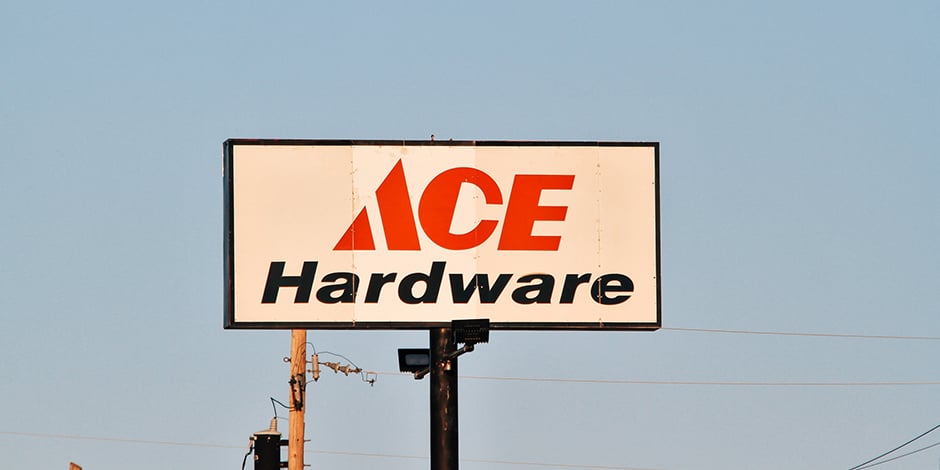The pandemic-driven boom in home repair, rehab, and do-it-yourself projects is over, leaving Home Depot and Lowe’s in the dust. Hobbled by high prices and interest rates, US existing home sales have plunged to a level not seen since August 2010, when the country was still digging out from the Great Recession.
Home prices remain out of reach for most and little hope of a turnaround anytime soon.
“The golden age of single-family housing is behind us,” Mark Zandi, chief economist at Moody’s Analytics, recently told Bloomberg, adding, “the next 10 years is going to be more of a slog.”
Home Depot has been feeling the pain, clocking three years in a row of revenue declines. Lowe’s recently reported a 7% year-over-year decline in revenue for the quarter ended Oct 30, on top of a 9% decline for the previous quarter.
There are many global factors that have big-box hardware stores on the ropes. But a recent visit to my neighborhood Ace Hardware suggests there’s more to it. So do the financials.
If consumers have gone soft on hardware, why is Ace flourishing?
In its most recent filing, Ace – a cooperative of nearly 5,000 locally-owned stores in the US – reported third quarter revenue was a record (up 2.5% year-over-year), net income was a record (up 29.2%), and in the past six years it has added close to 900 new stores to its fleet. What’s going on here?
For starters, just about anyone who has been inside a Home Depot or Lowe’s has a story to tell of utter frustration trying to find that one widget to finish a do-it-yourself repair project. Good luck finding a sales associate. Even if you do, good luck finding one who knows in which aisle and bin that widget might be found.
Who knows how often shoppers leave Home Depot and Lowe’s without buying anything, worn out and annoyed that they wasted the gas and the time it took to get there and back?
This was on my mind when I recently visited my neighborhood Ace. It’s less than three miles from my home, not a 30-minute round trip drive and a gallon of gas. Secondly, the Ace is a tenth the size of the big-box stores. Missing were those feelings of intimidation and anxiety I associate with a cavernous store.
My shopping list was short. I needed a special screw for a project. In spite of its size, the Ace aisles are jammed with merchandise. More significantly, the store was also staffed by sales associates who knew where things were.
The associate who helped me spent five or 10 minutes tracking down what I needed, an eternity in retail. I bought a bag of screws for $2.36, probably way more than I might have paid at Home Depot or Lowe’s, but well worth avoiding the drive and the hassle.
While I was chatting with the associate, my wife discovered a display of mums and decided to buy some flowers for the fall. Then, she needed pots to put them in.
Somewhere between the aisle of fasteners and the flower pots, I noticed that the store had bags of rock salt in stock. We hadn’t had snow yet but I realized I wasn’t prepared. I mentioned at checkout that I have a driveway that tends to get icy. The owner was manning the register and said she could have a winter’s worth of rock salt delivered, and could recommend a local contractor who would come out and spread it as needed.
I’ve been in my local Ace Hardware store enough times now to know that many of the sales associates have been working there for years. Some are former contractors and others are seniors who have a lifetime of knowledge to draw on when trying to help shoppers solve problems. (A similar experience would likely be had at True Value, also a cooperative of owner-operated franchise stores, with about 2,200 locations in the US.).
Ace is flourishing because it’s culture is truly customer-centric, and the stores are locally-owned and well staffed. The merchandise is more expensive than the megastores, but the selection feels curated for people like me.
Ace has up its sleeve one other advantage, its own big-picture factor… Small is the new big.
Walmart, Target, and their retail brethren are retooling their footprints. Instead of opening more huge stores that require a commute to get there, big-box retailers are now opening smaller stores in local open-air shopping centers, where consumers are doing more of their buying these days.
Consumers are staying closer to home in general, and companies like Ace and True Value, who were there and thriving all along, seem to know who those consumers are and what they want.
Consumer research giant J.D. Power found that Ace Hardware ranked highest in customer satisfaction among home improvement retailers for the 15th time in 16 years.
Read the full blog on Forbes.com. *Subscription required.













